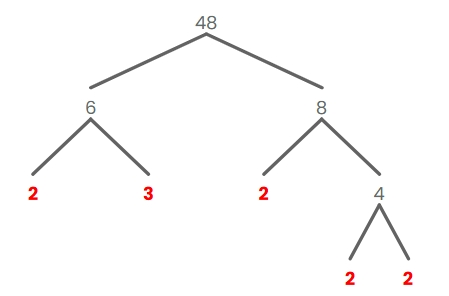Prime Factorization Calculator
Enter a number to automatically perform prime factorization.
Prime Factorization of Number
Result
What Is Prime Factorization?
Prime factorization is the process of breaking down an integer into a product of prime numbers. Every integer can be uniquely expressed as a product of prime factors (disregarding the order). Example: The prime factorization of 12 is 22 × 3.
Methods of Prime Factorization
Short Division Method
- Begin with the smallest prime number (2) and check if it divides the given number evenly.
- If divisible, record the prime number and divide the number by it.
- Continue dividing the resulting quotient by the smallest possible prime number.
- Repeat this process until the quotient becomes 1.
- Combine all recorded prime numbers to form the prime factorization.
Example: Factorizing 36
Solution:
36 ÷ 2 = 18
18 ÷ 2 = 9
9 ÷ 3 = 3
3 ÷ 3 = 1
Result: 36 = 22 × 32
Factor Tree Method
- Create a tree diagram to progressively break down the number until all branches end in prime numbers.
- Each non-leaf node represents a number, and its branches represent its factors.
- Combine all leaf nodes to determine the prime factorization.
Example: Factorizing 48
Solution:
Start with 48 = 6 × 8
Then, 6 = 2 × 3 and 8 = 2 × 4, followed by 4 = 2 × 2
Result: 48 = 24 × 3

Examples
Example 1: Prime Factorization of 28
Solution:
28 ÷ 2 = 14
14 ÷ 2 = 7
7 ÷ 7 = 1
Result: 28 = 22 × 7
Example 2: Prime Factorization of 60
Solution:
60 ÷ 2 = 30
30 ÷ 2 = 15
15 ÷ 3 = 5
5 ÷ 5 =1
Result: 60 = 22 × 3 × 5
Example 3: Prime Factorization of 81
Solution:
81 ÷ 3 = 27
27 ÷ 3 = 9
9 ÷ 3 = 3
3 ÷ 3 = 1
Result: 81 = 34
Example 4: Prime Factorization of 100
Solution:
100 ÷ 2 = 50
50 ÷ 2 = 25
25 ÷ 5 = 5
5 ÷ 5 = 1
Result: 100 = 22 × 52